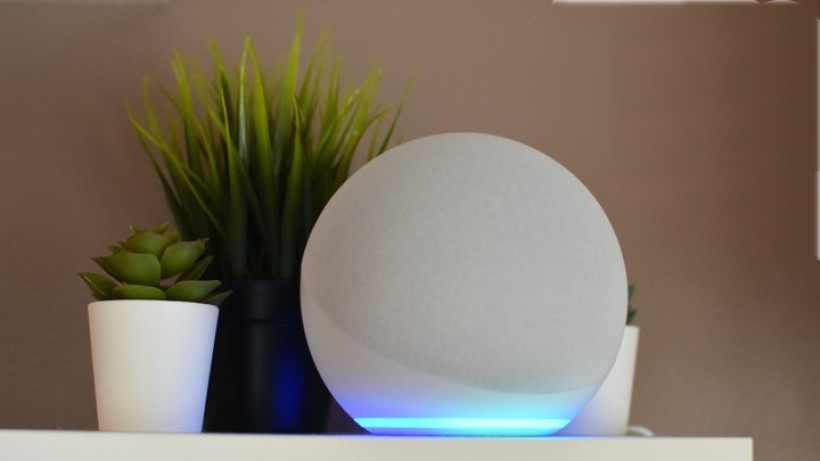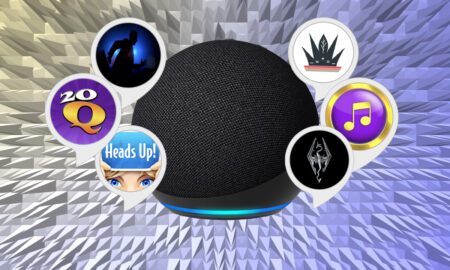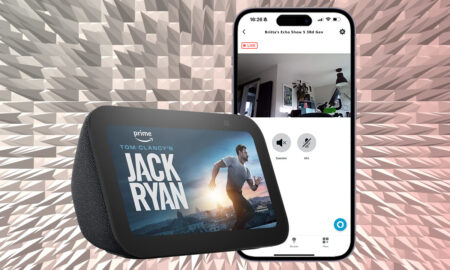Amazon's flagship speaker gets better and smarter ... all round.
There's a lot of competition in the smart speaker space, but the fourth-gen Echo is by far the best value Alexa speaker thanks to its ZigBee radio, which turns this into a much more useful smart home hub, and its improved audio capabilities, which are pretty great for a speaker at this price. The new design brings a more modern look, but we're most excited about the new chops under the hood - although we've not been able to test those yet.
Pros
- New design
- ZigBee / Sidewalk radios
- Stereo sound
- Simple setup
- New tap to snooze feature
Cons
- ZigBee pairing hit or miss
- Waiting on new features
- Bass not much better
After several years of incremental upgrades, Amazon’s flagship Echo smart speaker is finally getting serious about being a part of your (smart) home.
With a bold new spherical design, stylishly muted colors, and a subtler more organic aesthetic, the new 4th-gen Echo fits more harmoniously into the home, and is striving to make it even smarter.
Some nice improvements on the audio side also beef up the speaker’s musical chops, and enhanced brains – courtesy of Amazon’s new AZ1 Neural Edge processor – give the AI itself an upgrade. All of which should make it feel a bit more like a family friend rather than a slightly deaf, awkward neighbor.
We’re also excited to see the addition of ZigBee and Sidewalk as standard in the 2020 Echo model, alongside Bluetooth Low Energy (BLE). This move should make the home automation side of the Alexa ecosystem more accessible to everyone.
Little and large: Echo (4th-gen) v Echo Dot (4th-gen)
Having to buy extra hubs and bridges has put off a lot of people from getting the optimal experience here, and that £50 smart home tax you paid for the (now defunct) Echo Plus was a bit steep.
Now, with the £89 Echo a bonafide smart home hub, it’s easier than ever to get your smart home set up right.
We’ve had our hands on the new Echo in Glacier White for a few days now, and here’s our review of Amazon’s latest and greatest smart speaker.
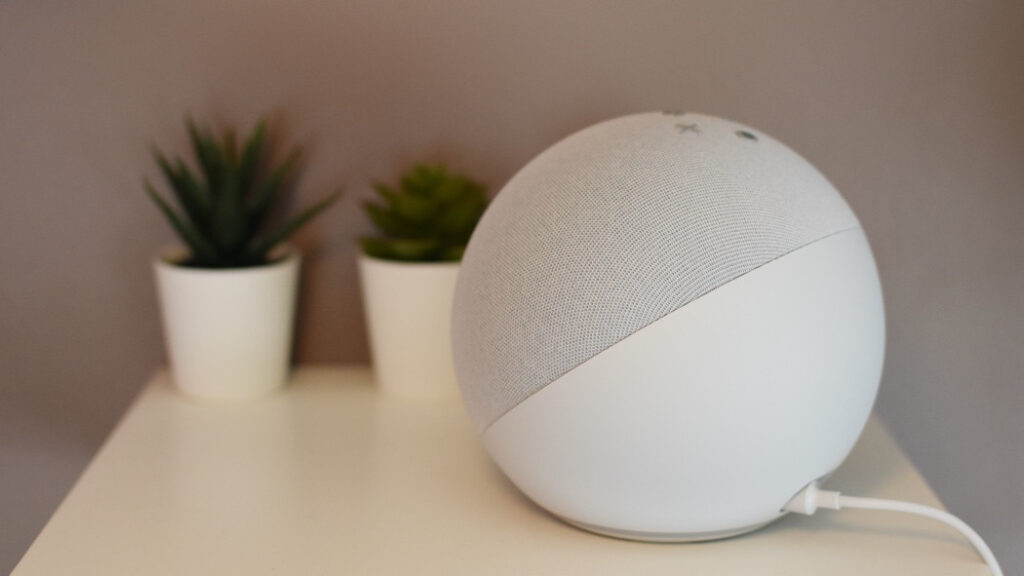
Amazon Echo 2020 model: Design and setup
Beyond the behind the scenes meshing of the previous-gen Echo and Echo Plus and an improved processor, the big news here is the major design change.
The Echo has ditched the tall and cylindrical look in favor of a squat and somewhat cuddly look (both my kids immediately wanted to pick it up and cradle it in their hands), sporting a new round form-factor that is softer and less imposing than the original design.
- Rivals: HomePod Mini review / Nest Audio review
About the size of a honeydew melon, and just a smidge shorter than the third-gen Echo, the new Echo is still wrapped in the same trendy fabric covering, but the hard-plastic top is gone – relocated around the back of the device in the form of a semi-circular base.
This gives it a much more organic look, more likely to be at home in a living room or bedroom than its predecessors. It comes in three colors, Glacier White, Charcoal, and Twilight Blue.
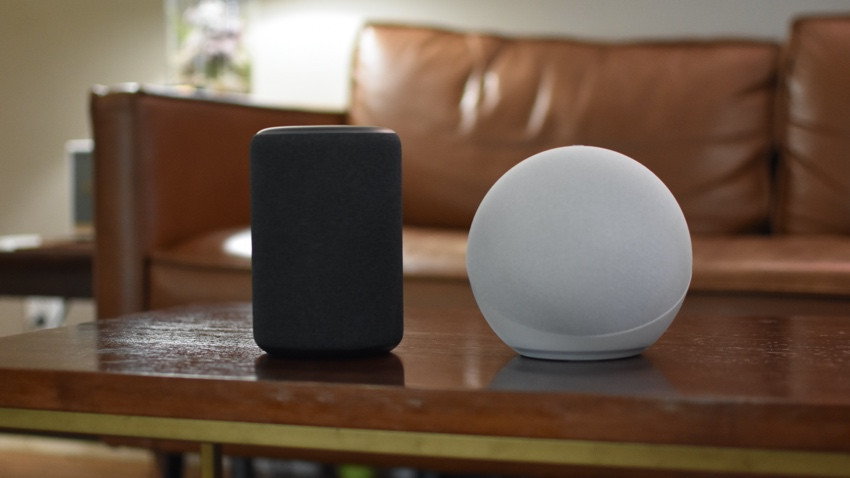
From the front all you see is the fabric portion, and a hint of the four physical buttons that peep out from the mesh material on top of the device.
The buttons have the same functions as on the previous generation: A plus and minus button for volume, an action button (to activate Alexa without the wake word, snooze alarms, and press and hold to reset the device), and a mute button – which turns off Alexa’s microphones so it can’t hear you (the button turns red).
Rivals: HomePod v Sonos One
The iconic LED ring is still here, only it’s gone down under, situated at the base of the ball. It still cycles through its various colors, including spinning blue when Alexa’s thinking, solid red when its muted, and incrementally completing the circle as you adjust the volume.
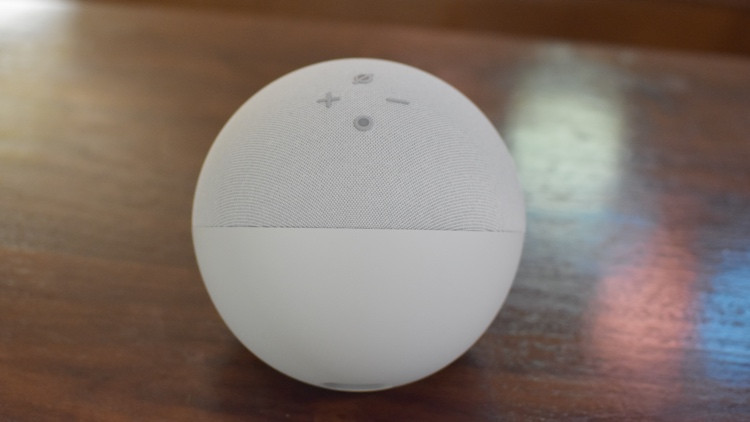
We liked this change a lot, it’s subtler and less obtrusive, something you definitely want in home tech. The original placement on the top could be very distracting, especially in a dark room. Now you can see the ring if you need to but it’s not so in your face.
It also creates a nice subtle lighting effect when it reflects off whatever surface it’s on. But it does make it easier to miss notifications or see the visual as you change the volume.
Diddy designs: HomePod Mini v Echo 4th-gen
Another small hardware change is the power cable. Now all white (no matter which color Echo you choose) the plug itself it’s about half an inch thinner and a quarter of an inch longer than the previous one, meaning it’s slightly less of an outlet hog.
The connection port remains the same, as does the inclusion of a 3.5mm audio in/out jack.
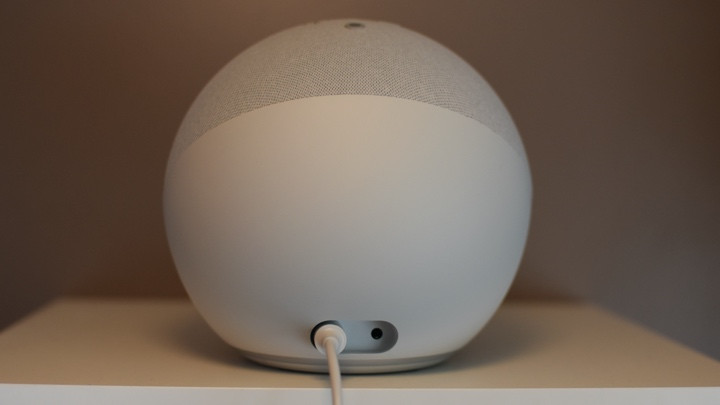
Set up is seriously simple, an area Amazon has pioneered in the smart home, largely due to its ability to control the whole purchase process.
If you buy your Echo device on your Amazon account then when you power it up and log into the Alexa app on your smartphone or tablet it will immediately recognize the device and prompt you to set it up.
If the device doesn’t come pre-paired it’s still a straightforward process. Sign into the Alexa app and tap More > Add a Device > Amazon Echo and then select Echo Speaker and follow the steps.
See also: Echo Dot 4th-gen review
With either method you then assign your Echo to a group in your home – most typically named after rooms. If you already have any Echo devices, it should be automatically added to an Everywhere group to enable multi-room music.
You can then also add it to new groups should you want (which you will want! Multi-room music is easily one of the best features of the Echo speakers).

Amazon Echo 2020 model: Features
As with all Echos, the main dish on this menu is Amazon’s voice assistant, Alexa. And with this new model comes a new and improved assistant, thanks to Amazon’s first-generation AZ1 Neural Edge processor. The company describes it as “an all-new silicon module that’s purpose-built for accelerating machine learning applications.”
In English this means Alexa is about to get a lot snappier. The processor will allow the AI to handle speech requests locally, making its response time much faster.
Smart speaker showdown: Nest Audio v Amazon Echo
So, all those handy things you use Alexa for – “Alexa, set a timer for 10 minutes,” “Alexa, what’s on my calendar tomorrow?”“Alexa play my Chill Out Playlist from Spotify,”“Alexa, what’s a recipe for chicken fajitas?” – will take a few milliseconds less than before.
The new chip will facilitate a raft of new abilities including Natural Turn Taking, Kids Mode, Care Hub, Guard Plus, and others (read more about all these new features here).
It will also help make Alexa understand you better, giving it the ability to ask you what you meant when it can’t do what you asked. So, if you say “Alexa, turn on the lights in Dad’s room,” and it doesn’t know what to do, it can create a Routine for that command so it works next time.
The new Echo also doubles as a bridge for Amazon’s new Sidewalk network – so you can connect compatible devices like Ring lighting products to the Echo without needing a separate bridge.

You’ll notice we used the word “will” a lot just now. That’s because all these exciting features aren’t live yet and we weren’t able to test any of them.
In fact, other than the sound (more on that in a bit) and a new tap to snooze feature pinched from the Echo Dot with a Clock, there isn’t anything totally new for us to test.
We were able to test out the ZigBee radio, which has been standard on the Echo Plus, Studio, and the original Show for a while, but this does makes this Echo smarter than the previous generation. The big news here is mainly that it’s finally available on a sub-£100 model.
It is a smart move by Amazon, and one we’ve been waiting a long time for. While most people buy an Echo because they want a voice-controlled music player, it’s a quick skip and a hop to “Oooh, I’d like to control my lights as well.” Only to find out they should have spent an extra £50 for the Echo Plus, pretty much ending their smart home dreams right there.
Now, the wonderful world of the smart home will be opened to anyone who chooses the big girl Echo – a choice they’ll likely make over the cheaper (also now spherical) Dot if they’re looking for better sound quality.
You can now just connect any compatible ZigBee device directly to the Echo instead of needing a separate hub or bridge as you normally would.
This includes smart light bulbs from the likes of Philips Hue, a myriad of motion and contact sensors, smart plugs, door locks, and more. All of which make it much easier to start building a smart home.
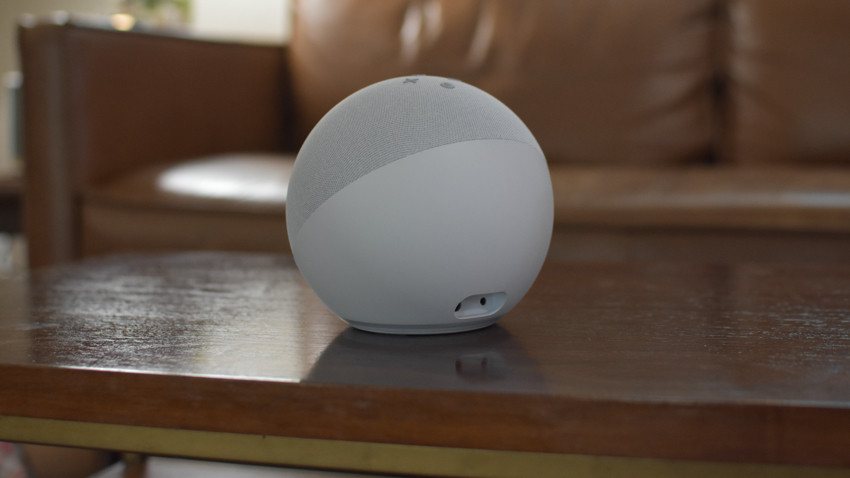
Once connected, you can use the smart devices in Alexa Routines and Scenes – and do handy things like have your lights turn on when you open your front door.
The Echo also has a temperature sensor built in, a great feature for setting up climate control routines – if you have a fan plugged into a smart plug you can have Alexa turn on the fan when the temperatures goes above a set point.
Fair warning though – if you’re looking to set up a sophisticated smart home, the hub capabilities of Echo still aren’t on par with say a SmartThings, or even a HomeKit setup.
First, there’s no Z-Wave (although if you have a Ring Alarm system you can sort of back-door your way into adding Z-Wave devices to Alexa through that integration).
Second, there aren’t a lot of compatible devices (that will work directly with Alexa Routines), plus you may lose some features of those that do work. For example, you can’t set Philips Hue scenes when only connected to an Alexa hub, you need a Hue Bridge for that.
Also, Amazon’s efforts at simple setup fall down here. In theory, just turn on your device and Alexa will discover it for you. In practice it can take several attempts to do this.
Each device has a slightly different way of going into pairing mode, and the speaker and the app are not always on the same page – with Alexa saying it can’t find anything, but with the device showing up in the app’s list of devices, often buried under the obscure name of First Motion Sensor or Second Light.

Amazon Echo 2020 model: Sound quality
Smart home smarts aside, you probably want a smart speaker for that magical hands-free music experience and that means it’s the sound quality that you’ll want to know about. So, is it any good?
Yes, this spherical smartie sounds superb for a sub £100 speaker. And if you’re upgrading from an original Echo – or this is your first foray into smart speakers – you’ll be impressed.
If you have an Echo third-gen gen or Echo Plus second-gen you won’t see a huge difference. The spec sheet is similar, with all boasting a 3.0-inch woofer and an 0.8-inch tweeter – although the new Echo has dual tweeters compared to the originals’ single tweet. This brings stereo sound to the Echo, without the need to pair to a second device (although you can), and it’s also enhanced by Dolby processing.
Another upgrade is that – as with the higher-end Echo Studio – the new Echo automatically senses the acoustics of your space and fine-tunes audio playback. This was definitely noticeable when we tested it out in both a large living room and a small bedroom. Ryan Adams’ vocals on La Cienega Just Smiled were clear and full in both settings, with the sound filing each space remarkably well.
As part of our audio testing we pitted the new Echo against an Echo Plus and the new Echo clearly came out on top thanks to crisper, clearer vocals and a really clean sound.
Kate Bush’s soaring voice was never muddied during This Woman’s Work and the directional sound – aided by the new shape – really helped project the music further into the room when compared to the Plus.

However, the Plus did offer a marginally heftier, slightly richer bass, especially noticeable when we queued up Bad Guy by Billie Eilish. It seemed like the larger surface area of the Plus helped a tad with the deeper notes, but the new Echo was definitely superior on the mid-range, and the placement of the vocals with the rest of the mix – resulting in a better overall sound.
The new Echo also filled the room much more convincingly. If you really hanker after deep bass the Echo Studio should be your Echo of choice, but for the rest of us, the Echo delivers excellent sound and clarity and is mind-blowingly impressive for a speaker of this size and price.
Of course, there’s also 3.5 mm audio in/out line, so if you have a high-end sound system you can give it voice control via the Echo, and it also acts as a Bluetooth speaker if you have a digital collection and don’t want to rely solely on the many, many streaming services Alexa supports.


